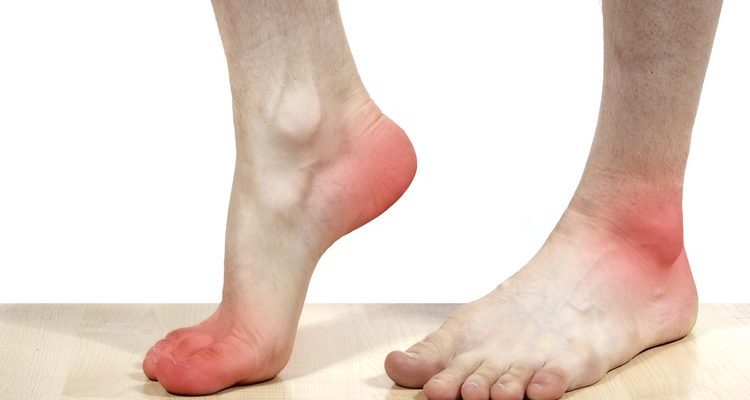Heel spurs: What you need to know
Like | DoctorBabu | December 25, 2017 | Health health, healthy tips, Heel spurs
A heel spur is a condition where a calcium deposit grows between the heel and arch of the foot. What are the symptoms of heels spurs and what increases a person’s risk of developing them?
Heels spurs may happen independently or may be related to an underlying health condition. People often assume that heels spurs are the cause of any pain in the heel, but other factors can also cause heel pain.
What is a heel spur?
Symptoms of heel spurs may include heat radiating from the affected area, a dull ache in the heel, and a sharp pain in the heel when standing.
A heel spur is a bony outgrowth that can occur on the underside of a person’s foot. They are also known as calcaneal spurs or osteophytes.
Heel spurs may be pointy, hooked, or shelf-like. The outgrowth of a heel spur extends from the underneath of the heel towards the arch (the middle of the foot). This area of the foot is called the plantar fascia.
When seen on an X-ray, a heel spur may be up to half an inch long. If an X-ray is unable to confirm a suspected heel spur, a doctor may refer to the condition as “heel spur syndrome.”
Symptoms of heel spurs can include:
inflammation and swelling at the front of the heel
heat radiating from the affected area
small, visible bone-like protrusion under the heel
sharp pain like a knife in the heel when standing up in the morning
a dull ache in the heel throughout the rest of the day
point of tenderness at the bottom of the heel that makes it hard to walk barefoot
Causes
Heel spurs happen when long-term muscle and ligament strain wears out the soft tissues in the heel. Tearing the membrane that covers the heel bone is also a cause.
The heel can also become more vulnerable with age. A 2015 review of heel pain noted that as a person ages, the pads in the heel wear down and fail to provide shock absorption.
Over time, calcium deposits can build up under the heel. These deposits form bony protrusions, which are heel spurs.
Risk factors
Athletic activities: Running and jumping can wear down the heel and arch of the foot.
Activity on hard surfaces: Frequently walking, running, or jumping on hard surfaces can wear down the heel.
Trauma to the heel: Bruising the heel and tearing the membrane that covers it can lead to heel spurs.
Getting older: A 2008 study found heel spurs to be common in older men and women.
Being female: A 2014 study found that heel spurs are more common in women than men.
Being overweight: Researchers also found that heel spurs were related to obesity.
Improper footwear: Frequently wearing shoes that do not fit properly, have lost their support, or are not supportive, such as flip-flops, can lead to heel spurs.
Heel spurs are often confused with a condition called plantar fasciitis. Having plantar fasciitis increases a person’s risk of developing heel spurs. Heel spurs often occur in people who already have plantar fasciitis.
Up to 15 percent of people with foot symptoms that require medical attention have plantar fasciitis.
There are important distinctions between heels spurs and plantar fasciitis. A heel spur is a calcium deposit that forms a bony protrusion along the plantar fascia.
In contrast, plantar fasciitis is a condition where the plantar fascia gets irritated and swollen, which causes pain in the heel.
Possible causes of significant force include:
Being obese
walking or otherwise exercising the foot for a very long time
wearing shoes that do not support the arch of the foot
Having diabetes is also a risk factor for plantar fasciitis.
Plantar fasciitis usually goes away without treatment. Heel spurs, on the other hand, are permanent unless medically treated.
Treatment
Resting the feet may help to reduce the swelling and pain of heel spurs.
Treatments for heel spurs may include:
Rest: Getting plenty of rest and taking pressure off the feet can help to reduce pain and swelling in the affected area.
Applying ice: This can help reduce pain and swelling.
Using custom-made orthotics (shoe inserts): These donut-shaped inserts go inside the shoe to take the pressure off the heel.
Wearing cushioned sports shoes: These may also help to relieve pressure and reduce pain.
Anti-inflammatory medication: This helps to reduce swelling.
Cortisone injections: These reduce swelling and pain in the affected area. They are a stronger option if over-the-counter anti-inflammatory medication is not effective.
In rare cases, surgery may be necessary to remove the heel spur. However, the above treatments are usually effective, and surgery is not needed.
If heel spurs are caused by an inflammatory type of arthritis, treatments for the underlying condition may also improve symptoms.
Outlook
The outlook for heel spurs is positive. The calcium deposit will always be there unless surgically removed, but this is not normally problematic, as treatments to reduce pain and swelling tend to be effective.
In cases where treating the symptoms is not effective, surgery to remove the heel spur is possible.

Leave a Reply